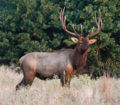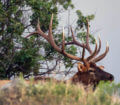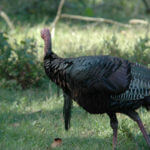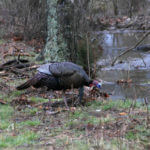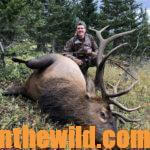Editor’s Note: When I think about elk and elk hunting, the first person I think of is Wayne Carlton of Montrose, Colorado. Wayne and I have been friends more than 30 years, and he’s built calls for 33 years with his latest, the Native by Carlton calls and hunting accessories available at http://www.nativebycarlton.com/. We’ve hunted turkey, deer and elk together. Wayne has been on TV shows and featured in videos, and he’s one of the most well-known elk hunters and elk guides in the nation. Wayne Carlton plays a very-active role in the Rocky Mountain Elk Foundation (RMEF) https://www.rmef.org/. I asked Wayne, “Why do you always call after the shot?”
 Whether you’re hunting with a bow or with a rifle, a lot of things can happen between the time you squeeze the release or the trigger, and the bullet or the arrow doesn’t hit exactly where you’re aiming for a multitude of reasons. So, many years ago, I started the habit of calling to the elk as soon as my hunter or me released the arrow or squeezed the trigger. I found that as soon as the animal took the hardware and heard that cow elk calling, he didn’t really know what had happened. He would be confused. So, oftentimes, he’d stop and give you a chance for a second shot.
Whether you’re hunting with a bow or with a rifle, a lot of things can happen between the time you squeeze the release or the trigger, and the bullet or the arrow doesn’t hit exactly where you’re aiming for a multitude of reasons. So, many years ago, I started the habit of calling to the elk as soon as my hunter or me released the arrow or squeezed the trigger. I found that as soon as the animal took the hardware and heard that cow elk calling, he didn’t really know what had happened. He would be confused. So, oftentimes, he’d stop and give you a chance for a second shot.
I had a bull that scored 380 points coming to me, and he was responding more to an elk bugle than he was to a cow call. As he approached a little creek, I bugled at him the last time, and he was coming right to me. When he was at 12 yards, I started drawing my bow, and I gave him two quick cow calls. At that time, the bow I was shooting had a tendency to want to pull away from me. As I felt the bow start to pull away from me, I pulled back hard. When I did, I caught my face mask with my thumb. So, I couldn’t see the bull. When I released the arrow, I was about 20 yards off my shot. But if I hadn’t double cow called to him, I never would have stopped the bull and had the opportunity to shoot.
 When you’re bowhunting, most of the time whether you make a good shot or a bad shot, when the bull hears that cow calling close to him, I believe he thinks, “Maybe I don’t hurt as bad as I think I do.” Many times, while he’s deciding whether or not he wants to go back and find that cow, or he needs to run off, he’ll just go down. Several times after I’ve shot an elk and cow called to him, I’ll have time to get another arrow on the string and put a second arrow in that bull. This tactic not only works on elk, but I’ve found it works on most animals during the rut or in spring gobbler season.
When you’re bowhunting, most of the time whether you make a good shot or a bad shot, when the bull hears that cow calling close to him, I believe he thinks, “Maybe I don’t hurt as bad as I think I do.” Many times, while he’s deciding whether or not he wants to go back and find that cow, or he needs to run off, he’ll just go down. Several times after I’ve shot an elk and cow called to him, I’ll have time to get another arrow on the string and put a second arrow in that bull. This tactic not only works on elk, but I’ve found it works on most animals during the rut or in spring gobbler season.
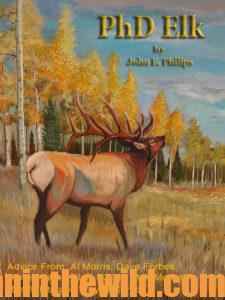 You can learn more about hunting elk in John E. Phillips’ Kindle book “PhD Elk: How to Hunt the Smartest Elk in Any State,” https://www.amazon.com/dp/B0087S2RQM. You can download a free app to enable you to read this book on your computer or your tablet. You also can download a free book, “Miz Denise’s Outdoor Cooking – More than 35 Recipes for Elk and Mule Deer,” at https://www.emailmeform.com/builder/form/rtJ6fD5m97CYhMXd.
You can learn more about hunting elk in John E. Phillips’ Kindle book “PhD Elk: How to Hunt the Smartest Elk in Any State,” https://www.amazon.com/dp/B0087S2RQM. You can download a free app to enable you to read this book on your computer or your tablet. You also can download a free book, “Miz Denise’s Outdoor Cooking – More than 35 Recipes for Elk and Mule Deer,” at https://www.emailmeform.com/builder/form/rtJ6fD5m97CYhMXd.

